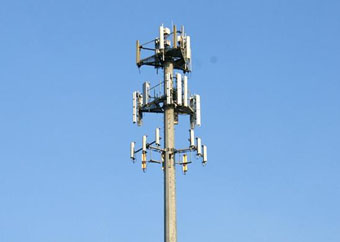
NSA Ends Bulk Collection of
Phone Metadata
| published November 30, 2015 |
By R. Alan Clanton, Thursday Review editor
The National Security Administration’s wide-reaching program of bulk data harvesting ended Sunday at midnight.
Starting Monday, the NSA no longer channels vast tracts of telephone metadata—phone calls, text messages, emails or social media activity on cell phones—into its enormous computer servers in Maryland, Texas, and most notably Utah—where the federal government constructed what is called the Utah Data Center, a massive warehouse filled with servers and computers designed to store and collate information.
The Office of the Director of National Intelligence announced on Sunday that the U.S. government will implement instead “a more focused and targeted” approach to the collection and analysis of data in order to keep Americans safe from terror threats and national security risks.
The end of bulk phone data collection brings to a halt part of a program of great controversy to privacy advocates, but one which security analysts and terrorism experts say was a valuable tool in the vetting of digital information in an age where new terror threats emerge every day. The program was implemented in the aftermath of September 11 in an effort to more closely track data flowing back and forth from cell phones, email accounts, landline activity and file transfers. Over the following decade or more, the program was enhanced and expanded to include many of the rapidly-developing tools used on millions of smart phones, laptops and handheld devices—including text messages, search engine requests, browser activity, uploads and downloads, and social media.
In theory, the analysis of such data would help law enforcement and intelligence officials accurately and easily flag suspicious activity—text messages and phone calls, for example, to and from certain locations in the U.S. to Afghanistan or Pakistan, where terror cells might be located. The data would also help law enforcement interdict in the development of actual terror plots as they unfold, and would allow for the collation and sharing of appropriate data between federal agencies.
But privacy advocates say that the program was far too intrusive and broad, and would ultimately lead to abuses by government agencies and law enforcement. Many privacy advocates suggested that the program—with its essentially warrantless ability to collect massive troves of digital data—was unconstitutional. When a security analyst named Edward Snowden copied troves of information about the NSA’s program, then shared it with reporters and investigative journalists in the spring of 2013, the revelations shocked millions of people and sparked a complex political controversy in the U.S. and around the world over issues of personal privacy and rapidly changing technologies. Some privacy advocates also worried about the unforeseen consequences of so much data being collected in one central location, and the consequences of allowing government agencies access to so much personal information.
The demise of the photo metadata harvest has been met with sharp criticism by law enforcement and much of the intelligence community, especially as it coincides so closely with the swift rise of the Islamic State and other radical terrorist organizations around the world. ISIS uses social media and technology effectively as a tool for both propaganda and recruitment, but also as means of communication and planning. Law enforcement and American intelligence officials say that without access to the sort of information available through phone metadata, it is possible that terror plots may develop unseen by U.S. authorities, leading to attacks in the United States.
After Snowden’s revelations, numerous lawsuits were filed by various groups challenging the NSA’s assumption of such broad and sweeping powers to collect metadata. The issue worked its way through the courts in the summer and fall of 2013, culminating in President Barack Obama addressing reporters in January of 2014. At that time Obama defended the program, though he acknowledged that the process had flaws, and that the NSA may have too easily overstepped its original mission. The President also acknowledged that Americans were justified in feeling uncomfortable with the idea of a government agency collecting such a vast trove of data.
Ultimately, in June of 2015, Obama signed reform legislation stripping the NSA of its power to collect metadata—the bulk harvesting of data from cell phones, landline phones and smartphones. Starting this week, government agencies must obtain a warrant or a subpoena to harvest phone data, and only after the warrant is presented to the specific telecommunication provider to whose services the target customer subscribes.
In the meantime, the NSA has requested an extension on the gathering of certain types of metadata through February 29, 2016. The Foreign Intelligence Surveillance Court is considering the request but has thus far not announced its decision.
Related Thursday Review articles:
Turnkey Tyranny: Or, If I Am Not Doing Anything Wrong, I Have Nothing to Fear, Right?; Kevin Robbie; Thursday Review; January 6, 2014.
Thwarting Terror: How Much of Your Personal Data is Enough?; R. Alan Clanton; Thursday Review; December 27, 2013.
